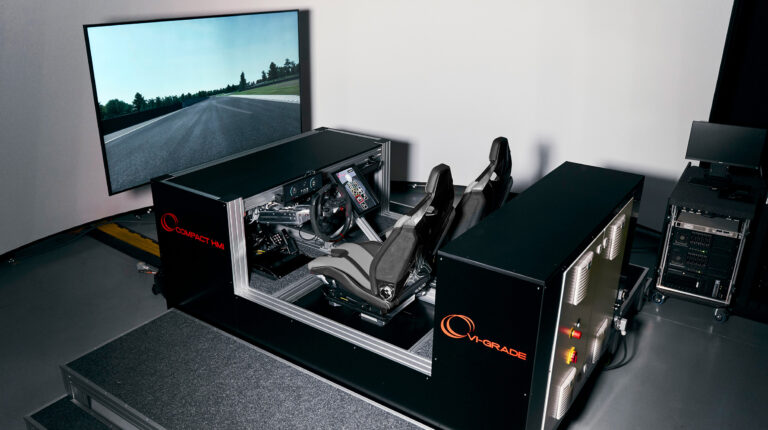New simulator technology from VI-grade is used to improve the development and testing of HMI systems, and has already been employed by two automotive manufacturers.
Aptly named the Compact HMI Simulator, the system combines a flexible interior setup with real-time driving simulations, integrating vehicle dynamics, AI-driven traffic scenarios and various driving conditions. It also supports hardware- or software-in-the-loop, enabling engineers to test and refine HMI designs in realistic environments without relying on static mock-ups or expensive physical prototypes.
Its modular, reconfigurable interior setup can accommodate different seating, steering, dashboard and display configurations. Furthermore, the system can automatically adjust to replicate seating, steering and pedal conditions for various vehicle types, from sports cars to SUVs. It offers real-time driving simulator capabilities, supporting XIL testing and human-in-the-loop evaluations.
Engineers can assess HMI usability and driver interaction, test digital interfaces like instrument clusters and infotainment systems, and study ADAS and driver monitoring, including distraction and workload impacts.
“HMI design is a critical aspect of modern vehicle development, directly impacting user experience, safety and driver interaction with advanced driver assistance systems. However, traditional evaluation methods rely on static mock-ups or costly physical prototypes, which are time-intensive and inflexible,” said Guido Bairati, MD of VI-grade.
“Our new Compact HMI Simulator overcomes these limitations by providing a configurable and highly immersive simulation environment that allows engineers to experience and refine HMI designs in real-time driving scenarios. We are especially excited to see its immediate industry impact, with two units already sold to automotive manufacturers, demonstrating the market’s strong demand for flexible, simulation-driven HMI development solutions.”


